In July 1980, a group of Salvadoran migrants crossed the border between Mexico and Arizona. They walked over a remote mountain range and halfway across a wide desert valley in the Organ Pipe Cactus National Monument. There were more than two dozen of them—people who had left behind lives and jobs to come to the United States.
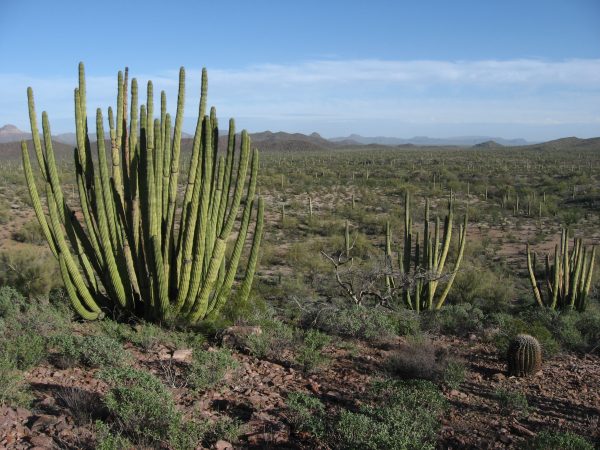
The migrants had hired guides to lead them on their journey through one of the most desolate areas of the Sonoran desert. But the heat proved too deadly and they hadn’t anticipated how far they would have to walk. Around a dozen of them died the first day out.
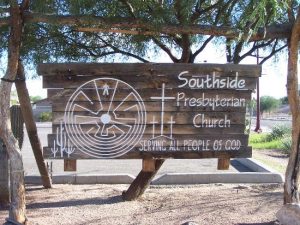
The survivors were eventually found huddled in the sparse shade of some scrub brush. They were delirious and suffering from intense dehydration and heatstroke. U.S. Border Patrol agents brought them to a hospital in Tucson. It was there that a Reverend named John Fife of Southside Presbyterian Church first encountered the migrants and began to learn more about why they had crossed the border.
These migrants had fled from El Salvador’s civil war. For decades, the country had been ruled by a series of oligarchs and corrupt military leaders. In the late 1970s and early 1980s, left-wing revolutionaries began to grow in power and influence, and the military responded by trying to crush the resistance. Death squads targeted union leaders, community organizers, and other people they suspected of sympathizing with the guerrillas. Many civilians were caught in the middle of this violence.
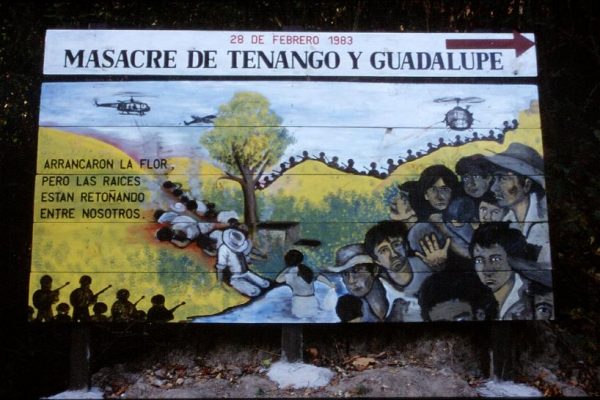
Similar conflicts were unfolding in Nicaragua and Guatemala. Hundreds of thousands of Central Americans were trying to get away from these dangerous and bloody civil wars. They were fleeing their countries, making their way up through Mexico, and crossing into the United States.
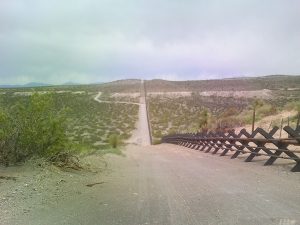
Rev. Fife and his congregation began to help these Central American migrants. Their efforts would mark the beginning of a new — and controversial — social movement based on the ancient religious concept of “sanctuary,” the idea that churches have a duty to shelter people fleeing persecution. There’s been a lot of talk about “sanctuary” in the news recently and the modern movement in the U.S can trace its roots back to Fife.
Fife’s first inclination had been to work within the rules of the immigration system to help the migrants seek asylum.
Since 1980—when Congress passed The Refugee Act — the U.S. has asked people to meet a number of requirements in order to qualify for political asylum. Applicants must establish that they have a “well-founded fear” of persecution in their home country, based on their race, religion, nationality, political opinion, or social group. They also have to prove their government is actually involved in the persecution or that it can’t control the groups that are.
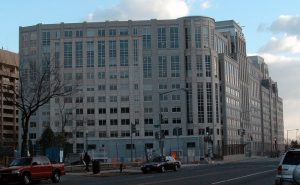
While the standards for asylum are straightforward, establishing one’s eligibility can be a challenge. The process relies heavily on a single person’s testimony about what they’ve been through, and there is seldom physical evidence to support the claims.
Despite the challenges of qualifying for asylum, Rev. Fife and his church—with help from some legal aid organizations in Tucson— began arranging legal assistance for the Central American migrants. They started visiting detention centers and helping people fill out the appropriate paperwork. They arranged for lawyers to represent them in court.
But Fife found that, in many cases, even when migrants met the requirements for asylum, they were not getting it. He began to wonder what was behind these decisions to deport people who seemed to be making valid claims about the dangers they faced back in their home countries.

Central Americans hoping for asylum faced significant hurdles. Just as they began turning up at the U.S.-Mexico border in the late-1970s and early-1980s, tens of thousands of refugees from other places — like Cuba and Iran — were also seeking refuge in the United States. The government was overwhelmed with applications.
Most Central Americans had also historically come to the U.S. for jobs—not because they were fleeing political persecution. The government was inclined to view them as economic migrants.
Asylum policy also intersected with foreign policy in complex ways. Ronald Reagan, who served as president from 1981 to 1989, saw Central America as an important front in the Cold War and the fight against communism. He argued the region was so close to the U.S. that the country’s national security required it to stop communist movements from flourishing there.
The U.S. had a long history of supporting Central American governments that aligned with its economic and foreign policy interests. Because the U.S. government considered the governments of El Salvador and Guatemala to be political allies in the fight against communism, it was reluctant to acknowledge that these governments were involved in the persecution of their own people.
Under Reagan, almost all Salvadoran and Guatemalan border-crossers were classified not as political refugees but as “economic migrants.” Under that designation, many failed to qualify for asylum and were sent back to their home countries. According to statistics from the U.S. Department of Justice, fewer than 3% of Salvadorans and Guatemalans who applied for asylum were approved. In that same period, the approval rate for Iranians was 60%. For Afghans fleeing the Soviet invasion, it was 40%.
This political climate put Rev. Fife and his congregants in a tough position. They didn’t want to encourage the migrants who were seeking help at their church to report to Immigration when they knew it was almost certain they’d be deported.
This was the quandary Fife was in when a man named Jim Corbett got involved. Corbett was a Quaker, and as the refugee crisis in Tucson continued to grow, his religious faith compelled him to take action, and he wanted Fife and his congregation to get involved.
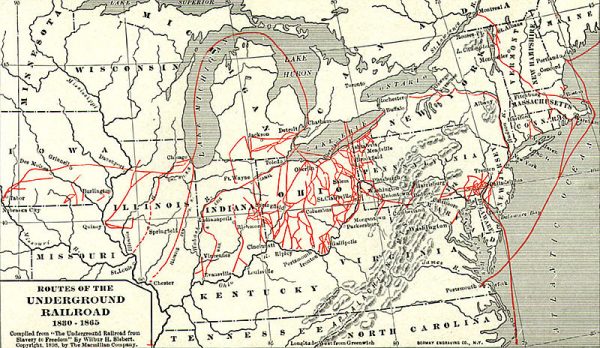
Corbett pointed to the church’s failings in protecting Jewish people fleeing the Holocaust in the 1930s and 40s. Corbett did not want to repeat that mistake. Instead, he wanted to emulate the actions of some Christians in the 1840s and 50s, when church people helped move runaway slaves across state lines and through the underground railroad to safety.
Corbett had already done some border runs on his own, picking up Central American migrants in Mexico and helping them cross the border to safety in the United States. But soon Rev. Fife and a handful of others started helping him. At first, they used Corbett’s property to shelter the migrants, and then they started using the church as temporary housing.
Soon, on any given night, the church would have dozens of people sleeping in the main gathering space. Church members at Southside Presbyterian provided food, clothes, English lessons, medical care, and access to immigration attorneys. The migrants were still undocumented and faced possible deportation. But the church provided access to resources, guidance, and a place to stay.
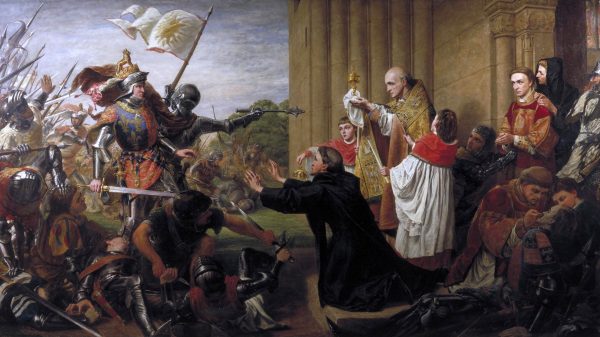
In deciding to take the refugees into their church, the congregation was drawing on a long history of other houses of worship doing the same. In Greek and Roman history, people who were threatened with persecution could find protection in temples. When the Roman Empire became Christian, churches took on the same function. The concept of “sanctuary” can also be found in medieval canon law and British common law. More recently, churches had sheltered conscientious objectors during the Vietnam War.
Meanwhile, the U.S. government’s view was that churches in the sanctuary movement were harboring undocumented immigrants who had crossed into the country illegally. Religious institutions in the U.S. do not have special permission to harbor people who are breaking the law. And, as it turns out, the government was keeping an eye on the sanctuary movement’s growing operation.
Despite potential legal ramifications, Fife thought that by going public the church could generate attention and gain support. They invited a few other churches across the country to join them in a public announcement — and in March of 1982, they hung a huge banner on the front of Southside Presbyterian Church that said, in Spanish, “this is a sanctuary of God for the oppressed of Central America.” They held a service and publicly welcomed a new family from El Salvador to join the other refugees who were staying at the church. And they staged a press conference to explain exactly what the “sanctuary movement” was and what their goals were.
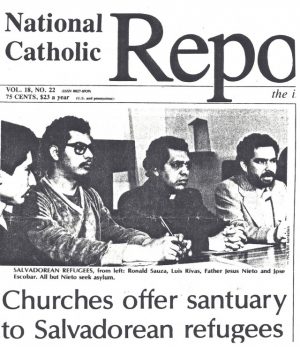
As word spread, a network of religious sanctuary spaces began to form. By the mid- to late- 80s, hundreds of churches and synagogues across the country had declared themselves sanctuaries. And those religious spaces were in turn connected to a network of churches that extended down into Mexico and Central America.
One of the government’s criticisms of the sanctuary movement was that it lacked the expertise and resources to evaluate potential refugees. But Rev. Fife argued that they had a vast network of priests and pastors in Central America who could help them vet potential migrants.
Meanwhile, as the movement grew bigger and more visible, the whole endeavor became more controversial — and riskier for participants in the sanctuary movement.



Comments (20)
Share
Thanks for the episode, It’s nice for Christians to be reminded of a time they got it right; and the role they have in the suffering of all peoples.
I don’t understand why this podcast is going the political route. The reason what no one wants people from South America is because as a whole they tend to be a big tax payer burden (EITC, SNAP, Medicaid…..). Simple as that. Jus look at the stats. It’s not the job of US to take in the worlds batters wife.
Stick to design and architecture please.
Ps : this is coming from an immigrant who fall in the highest earning ethic group in America. Look it up
This listener doesn’t represent what most 99pi listeners think. Keep it up! Another amazing episode!
Illegal immigrants actually contribute about $12 billion each year to state and local tax coffers, recent studies show that they by far are contributing much more then they receive.
99% invisible is about more than just design and architecture. It’s also about History and Infrastructure and Cities. This episode ties in 3 categories on a subject that I think most 99PI listeners (and I) will love. I can’t wait for the next 2 episodes!
It may not be the job of the US government, but it is a Biblical mandate for people of the Christian Faith to look after the oppressed foreigner, regardless of the legal ramifications. Those people are seeking asylum due to the policies and practices of the US government (look deeper into our history and involvement propping up the oppressive regimes referenced in the article, and the church has a duty to look after those left behind by the ravages of empire. Nice to see this article that shows the sacrifices of some people of faith and goodwill.
I remember my family sheltering two Salvadoran men in the early 80’s in Cleveland through my mom’s church (Presbyterian) on their way to Canada, and being told I couldn’t talk about it at school. They were only with us a couple of weeks (I think), helped us around the house and then moved on. Very polite and good men, and I remember they always seemed kind of sad.
Important history, maybe, but not what I come to 99PI for. What does this have to do with design? This episode was better suited to a more journalistic podcast like This American Life. I really hope this isn’t a harbinger of 99PI becoming too broad in its focus and losing touch with what made it great (see Radiolab for another example of this problem).
Sadly this ep was purely political and had nothing to do with design. Unexpected, looking forward for its return to the former glory! :)
I just wanted to personally thank you for producing this episode.
I’m not crying. It’s just raining very locally, around my eyes.
I wonder how many of these Salvadoran “immigrants” were actually MS13 gang members?? (https://en.wikipedia.org/wiki/MS-13).
Thank you for this timely and poignant episode! One of my favorites so far. Keep it up!
As an ethnic legal immigrant myself, I am appalled by 99pi’s action to prop up unvetted illegal aliens and dangerous criminals into my new country.
We immigrants believe that a country has the right to establish and maintain its borders, and to limit or refuse entry for its best interest. 99pi doesn’t and I totally understand.
I just don’t believe this is the right platform to publish your political agenda.
Please leave dirty politics out of beauty of design. Thanks.
Thank you for producing what is my favorite 99pi episode to date.
And thank you for Getting It.
With tears in my eyes,
A steadfast support of migrants (as well as recently laid off worker of U.S. refugee resettlement)
Thank you for a normally wonderful show and an exceptional couple of episodes. You folks are awesome keep up the good work
Sorry but I must echo the previous comments about the design aspects of the episode… which are few. Very interesting subject matter at the same time so thanks for that.
Just stick to the core of the show, design and architecture. The weekly newsletters have been great in this regard. The Frank Lloyd Wright episodes were good, keep that up! And stop “borrowing” episodes from other shows, even if design based. I hope we donated for original content right?
My first visit to your site and it is amazing. This article is great history to learn as that is a good thing and I didn’t know about some of this. Some commenters are concerned about straying from design only; so on that note, the immigration building pictured is downright ugly. 😉
Thank you for showing this little piece from my local history. It’s rare to hear this stories told in any kind of medium. As a coin carrying Salvadorean listener, i approve.
Thanks.
My dad’s first cousin, a Catholic priest, was active in the Sanctuary movement. One of his activities was smuggling immigrants from the US into Canada at the North Dakota border. I didn’t understand then what was going on at the time, other than he was arrested and jailed at one point. His name was Rev. Richard Sinner.